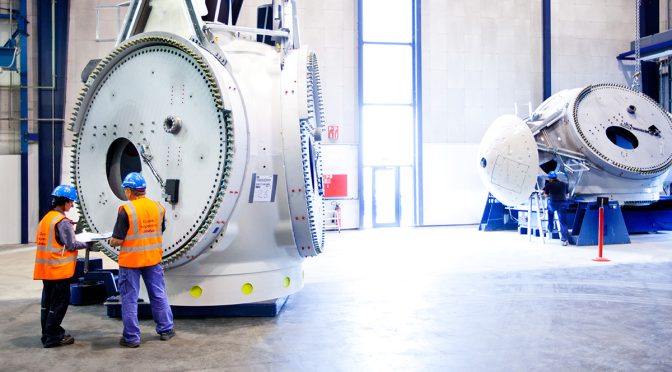Today the European Commission presented new measures in response to the rise in electricity prices across Europe. The measures are strongly influenced by the Russian invasion of Ukraine. The Commission wants Europe to accelerate renewables deployment to increase energy security and in particular reduce its dependency on fossil fuel imports from Russia.
WindEurope welcomes the European Commission’s objective to completely end Russian fossil fuel imports before the end of the decade. To this end, the Commission today presented the “RePowerEU” plan with a faster expansion of wind energy and other renewables at its core.
The European Commission reiterates the central role of renewables in ensuring Europe’s energy security. Europe still imports 58% of its energy – mostly fossil fuels and often from countries posing serious geopolitical risks. Wind energy is home grown and cheaper than imported fossil fuels. Every wind farm contributes to making Europe less reliant on fossil fuel imports.
The European Union wants wind energy to be 50% of its electricity by 2050. This means expanding onshore wind from 173 GW today to 1,000 GW and offshore wind from 16 GW to 300 GW. The Commission suggests that another 30 GW of wind energy, on top of the 450 GW that its decarbonisation scenarios foresee, could be deployed by the end of 2030.
Crucially, all of this depends on permitting. The European Commission acknowledges the fundamental need to simplify the permitting of new renewable energy projects. Improving permitting is “a matter of urgency” to Europe’s energy transition. Long and overly complex permitting procedures are the main bottleneck to the expansion of wind energy. The EU is currently building only around half of the new wind farms that it needs to build to deliver its 40% renewable energy target by 2030. The European Commission will present Guidance to National Governments on how to improve permitting in May 2022.
WindEurope welcomes the European Commission’s recognition of the critical role of the European wind energy supply chain in securing our energy supply. Wind energy provides 300,000 jobs across 248 factories in Europe and contributes €37bn to EU GDP every year. Each new turbine installed in Europe generates on average €10m of economic activity. But Europe is not building enough new wind energy. The current slow build-out of wind energy has left Europe’s wind energy supply chain in poor health. Without strong measures that support the European supply chain, there will be no energy transition “made in Europe”.
“More than ever Europe now needs to tap into its massive wind energy resources. Speeding up the growth of wind is central to achieving energy security. And we need to do it with European technology. Europe must do everything to preserve our world-leading wind energy supply chain. Accelerate permitting. Have smarter wind auctions that factor in wind energy’s contributions to a robust, resilient and circular economy. And boost research and development”, says Giles Dickson, WindEurope CEO.
The massive and rapid expansion of renewables requires huge volumes of new investments. To this end Europe’s electricity market rules must provide regulatory stability.
The Commission paper sets out measures aimed to mitigate the impact of high electricity prices on vulnerable households and businesses. WindEurope supports this goal. National Governments should prioritise the use of the increased carbon price and tax revenues that result from high energy prices to shield vulnerable consumers.
Certain National Governments have introduced or are considering clawback measures to tax what they consider to be “windfall profits”. The Commission Communication sets out very clear conditions for the use of such measures. They must be applied for a limited period of time and linked to pre-defined market conditions. They cannot apply retroactively. And they must not apply to electricity that generators have already sold forward through long-term PPAs or bilateral contracts.
WindEurope calls on the European Commission to ensure that National Governments apply these conditions. A misguided use of the clawback measures would create market distortions, deter investment and derail the urgently needed expansion of renewables.


